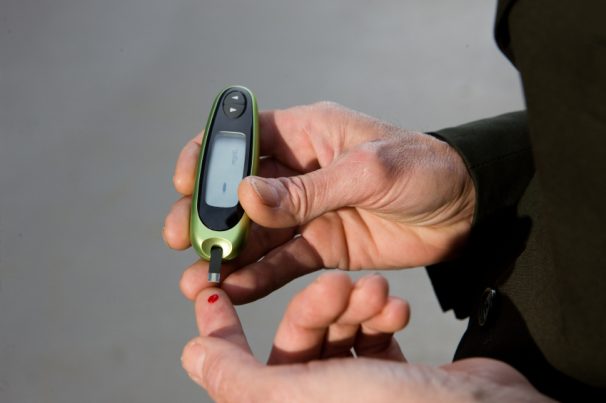
Researchers have developed a novel skin patch for diabetics that encourages their bodies to produce more insulin
Monday, January 08, 2018 by Zoey Sky
http://www.realsciencenews.com/2018-01-08-researchers-have-developed-a-skin-patch-for-diabetics-produce-more-insulin.html

Millions of individuals with type 2 diabetes must remain vigilant when it comes to their blood sugar levels because this is a key component used to measure their health. Their glucose levels are often measured via blood sugar test kits, which involve pricking the finger to get a blood sample for testing.
But according to scientists from the National Institutes of Health’s (NIH) National Institute of Biomedical Imaging and Bioengineering (NIBIB), they have developed an “innovative biochemical formula of mineralized compounds that interacts in the bloodstream to regulate blood sugar for days at a time.”
The researchers worked on a proof-of-concept study performed with mice to determine if the biochemically formulated patch of dissolvable microneedles can work with blood chemistry to automatically manage glucose.
Richard Leapman, Ph.D. and NIBIB’s scientific director, said, “This experimental approach could be a way to take advantage of the fact that persons with type 2 diabetes can still produce some insulin… A weekly microneedle patch application would also be less complicated and painful than routines that require frequent blood testing.”
Insulin is a hormone generated by the pancreas and is secreted into the bloodstream. It regulates glucose based on food intake, and it is required to move glucose from the bloodstream into cells where sugar is stored or transformed into energy.
In patients with type 1 diabetes, the body does not make insulin at all. Type 2 diabetes, on the other hand, slowly “lessens the body’s ability to make or use insulin.” When left untreated, diabetes can cause both vascular and nerve damage in the body. The disorder can also have negative side effects on the eyes, feet, kidneys, and heart. (Related: Curing diabetes: A natural approach.)
The NIBIB researchers were led by Xiaoyuan (Shawn) Chen, senior investigator in the Laboratory of Molecular Imaging and Nanomedicine. Chen et al. are working on an alternate therapy approach to regulate blood sugar levels in type 2 diabetes via a painless skin patch. In November 24, 2017, the team published a study online in Nature Communications. Chen and his team tested the treatment on mice to verify its potential effectiveness.
The experimental patch’s base is made from alginate, a gum-like natural substance that comes from brown algae. Alginate is mixed with therapeutic agents and “poured into a microneedle form to make the patch.” Chen explained that since alginate is pliable material, it can poke the dermis, and worked well for the patch.
Chen’s team infused the alginate with a formula of biochemical particles that triggers the body’s own insulin production when needed. It also halts insulin production once normal blood sugar concentration is reached. Thanks to the patch’s responsive delivery system, the body’s needs can be met for days instead of “being used up all at once.”
The formula, generated by Chen, combines two drug compounds, exendin-4 and glucose oxidase, in a single patch. The compounds react with the blood chemistry, which triggers insulin secretion that is paired with a phosphate mineral particle. This stabilizes the compound until the patient needs it.
The researchers showed the patch at a demonstration, and it is at least as big as a half-inch square. It had enough of the drug to control blood sugar levels in mice for one week.
With further study, Chen et al. can soon develop a patch that individuals with type 2 diabetes can use. However, the team must first perform tests on treating larger animals with a patch that contains a proportionately more therapeutic compound. The patch must also be designed with longer needles so it can be used on human skin.
Chen concludes that the patch must be able to withstand daily activities such as “showering or sweating.”
Herbs that can lower blood sugar levels
Diabetics can incorporate more of the herbs below, which can effectively minimize your blood sugar:
You can read more articles about healthier food options at Fruits.news.
Sources include:
Tagged Under: Tags: blood chemistry, blood sugar, diabetes, discoveries, dissolvable microneedles, future tech, glucose, goodhealth, goodmedicine, goodscience, medical technology, sugar levels management, Type 2 Diabetes





